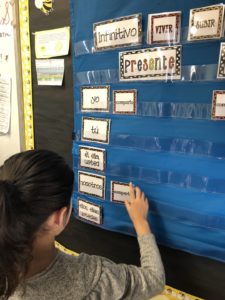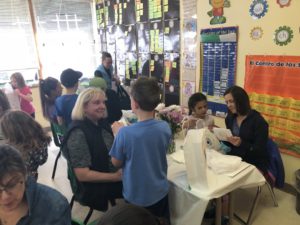Literatura
 This week we read Cuatro dólares y cincuenta centavos. Our objectives were:
This week we read Cuatro dólares y cincuenta centavos. Our objectives were:
- understand how to separate compound words in order to understand their meaning
- understand how to use and, but, and or to combine sentences
- understand how to conjugate the verb ir
- use comprehension strategies such as making connections, predicting and summarizing to construct meaning from the story
- review the comprehension skill drawing a conclusion
Matemáticas
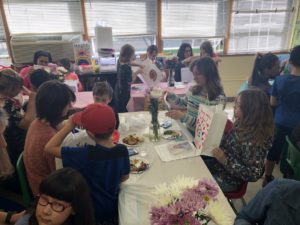
This week we began our new chapter time and temperature. Our objectives were:
- add time with and without regrouping
- tell time to the minute
- read time on a digital clock
- change minutes to hours or hours to minutes
- Subtract time with and without regrouping
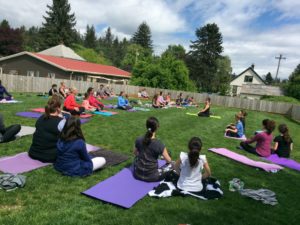 History & Geography
History & Geography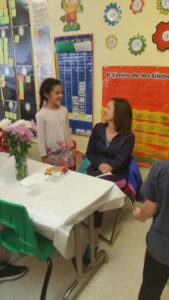
Social studies with Ms. Marci.
This week in our unit on European Exploration of North America we learned about the expeditions of Francisco Vasquez de Coronado and John Cabot. We also discussed the unit project that each student will be starting next week; working on a map, a journal entry, and a brief biography of their chosen explorer. Most of the writing for this project will be done in class though the map should be done at home.
Our objectives were to:
• identify motivating factors that led to the exploration of the Americas in different expeditions
• locate on a map or Globe key places explored and visited by the Spanish and English.
• explain the significance of Coronado in the early Spanish exploration of the Americas
• locate on a map or globe keep places explored and visited by the Spanish (the Caribbean Sea, the West Indies, Puerto Rico, Cuba, the Gulf of Mexico, the Grand Canyon, sir real Grande, and a Mississippi River)
• locate st. Augustine Florida on a map and identify it as the oldest continuously in habitat European settlement in the continental United States
• describe the purpose of missionary settlements in early Spanish exploration of North America
• describe the similarities and differences between missionaries and conquistadors
• explain why kings and queens in Europe were interested in exploring the Atlantic and the area to the west of Europe
• explain the importance to the Europeans of finding a Northwest Passage
• identify similarities and differences between John Cabot and Christopher Columbus
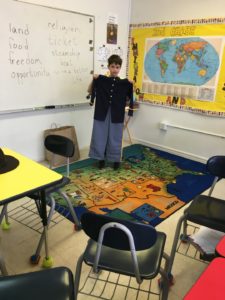
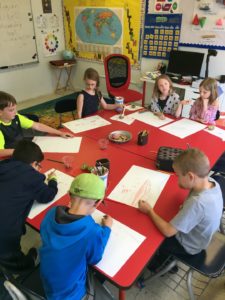 Social Studies with Ms. Laura We completed our unit on The Civil War with a review, assessment and a reading play. We also ate some food, similar to what soldiers might have consumed. Luke Wagner, from the four/five class, brought some items from his Civil War collection and spoke to us about life as a soldier and about several battles. We asked him many questions and appreciated his expertise! We started our unit on Immigration and Citizenship, talking about the reasons why people immigrated to the United States in the 1800s and 1900s. We worked on posters ‘advertising’ the great aspects of life in America.
Social Studies with Ms. Laura We completed our unit on The Civil War with a review, assessment and a reading play. We also ate some food, similar to what soldiers might have consumed. Luke Wagner, from the four/five class, brought some items from his Civil War collection and spoke to us about life as a soldier and about several battles. We asked him many questions and appreciated his expertise! We started our unit on Immigration and Citizenship, talking about the reasons why people immigrated to the United States in the 1800s and 1900s. We worked on posters ‘advertising’ the great aspects of life in America.
PROJECT ALERT: Students are asked to complete a project where they will research the life of an immigrant to The United States. This person can be a family relative, a friend, a celebrity, an athlete, or anyone who is an immigrant to our country. The students have received a guide sheet. This project, with a short presentation, will be due on Tuesday, May 29th.
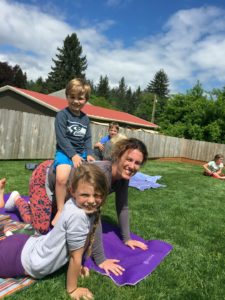 Science
Science
This week in our ecology domain we learned about food chains and food webs and began to understand energy pyramid. The students wrote about consumers producers and decomposers as well as creating their own example of a food chain.
Our objectives were to:
• describe and provide and example of a habitat
• describe how organisms in an ecosystem depend on each other and their environment
• describe what happens in a food chain
• identify the three essential Parts of a food chain: producers, consumers, and decomposers
• sequence a food chain of two or more trophic levels
• classify numbers of a food chain as producers, consumers, or decomposers
English Word Work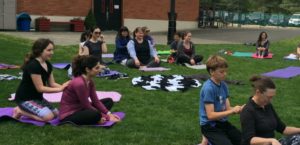
The class took our spelling test this Friday. For grammar we reviewed conjunctions. In our journals we used the word of the week “bedlam” in our entry and the saying “Touch and go” in another.

